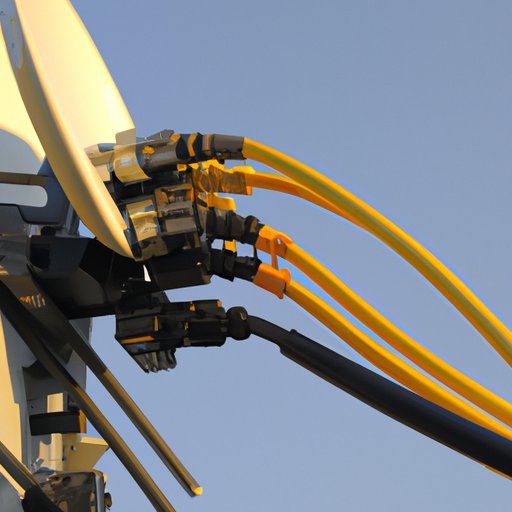
Introduction: The Importance of Internet Access
In today’s world, internet access is more important than ever before. From remote work to online education, streaming movies to staying connected with loved ones, the internet has become an indispensable part of our daily lives. However, not everyone has easy access to reliable, affordable internet. In this article, we will explore the different ways you can get internet, regardless of your budget or location.
Research the Best Internet Service Providers (ISPs) in Your Area
The first step to getting internet is to find out which providers are available in your area. This can be done easily by searching online. You can also ask friends or neighbors which ISPs they use and whether they are satisfied with the service. Keep in mind that internet providers may offer different plans and packages depending on your location, so it’s important to compare options carefully.
When choosing an ISP, there are several factors to consider:
- Price: Internet plans vary in cost, so it’s important to choose a plan that fits within your budget.
- Download and Upload Speeds: Different plans offer different speeds, so choose one that is appropriate for your needs.
- Other Features: Some ISPs offer additional features, such as free Wi-Fi hotspot access, security software, or parental controls. Determine which features are important to you.
Once you have researched ISPs in your area, it’s important to negotiate the best deal possible. Call or email the provider to ask about any current promotions or discounts. You may also be able to negotiate a lower price by signing a longer contract or bundling internet with other services.
Look for Affordable Internet Options
If you are on a tight budget, or unable to pay full price for internet services, you may qualify for discounted or subsidized internet. Many ISPs offer special programs for low-income families, students, and seniors.
You can also search for public Wi-Fi hotspots in your area. These are typically available at libraries, cafes, and public parks. However, keep in mind that public Wi-Fi may not be as secure or reliable as a private connection.
When comparing different plans and bundles, pay attention to the additional fees associated with each service. Some ISPs charge fees for installation, equipment rental, or early termination. Factor these costs into your decision to ensure you are getting the best deal possible.
Explore Different Types of Internet Connections
There are several different ways to access the internet, each with its own pros and cons. The most common types of internet connections include:
- Broadband: This is a high-speed internet connection that is always on. It is typically faster than DSL or dial-up, but may also be more expensive.
- DSL: Digital Subscriber Line (DSL) internet uses a phone line to connect to the internet. It is generally slower than broadband but may be more affordable.
- Satellite: Satellite internet uses a satellite dish to connect to the internet. It can be a good option for rural areas where other types of internet may not be available. However, it tends to be slower and more expensive than other types of internet.
- Fiber-Optic: Fiber-optic internet uses fiber-optic cables to transmit data. It is fast and reliable, but may also be more expensive than other types of internet.
When choosing an internet connection, consider factors such as speed, reliability, and cost. Determine which type of internet connection is best suited for your needs and location.
Tips for Improving Your Internet Speed
If you are experiencing slow internet speeds, there are several things you can do to improve your connection:
- Reset your router.
- Move your router to a central location in your home.
- Reduce the number of devices connected to your network.
- Update your router’s firmware.
- Upgrade your internet plan or switch to a different provider.
You can also optimize your home network setup to improve internet performance. This includes using a wired connection whenever possible, removing objects that may interfere with your Wi-Fi signal, and securing your network to prevent unauthorized access.
How to Set Up Your Home Internet Connection
Once you have chosen an internet provider and plan, you will need to set up your home connection. This typically involves setting up the necessary equipment and activating your service.
The exact process may vary depending on your provider and plan, but generally involves the following steps:
- Choose a router or modem that is compatible with your internet plan.
- Connect your router or modem to your computer or other devices.
- Activate your service with your ISP. This may involve setting up an account and providing personal information.
- Test your connection to ensure it is working properly.
If you encounter any issues during the setup process, refer to the troubleshooting section of your provider’s website or contact customer support for assistance.
Conclusion: Take Action to Get Connected
Access to the internet is essential for many aspects of modern living. Whether you need it for work, school, or personal use, there are many options available for getting online. By researching the best ISPs in your area, exploring affordable alternatives, and optimizing your setup, you can ensure you have a reliable internet connection that meets your needs.
Kick-start the process of getting connected today. Start by exploring internet service providers in your area.





